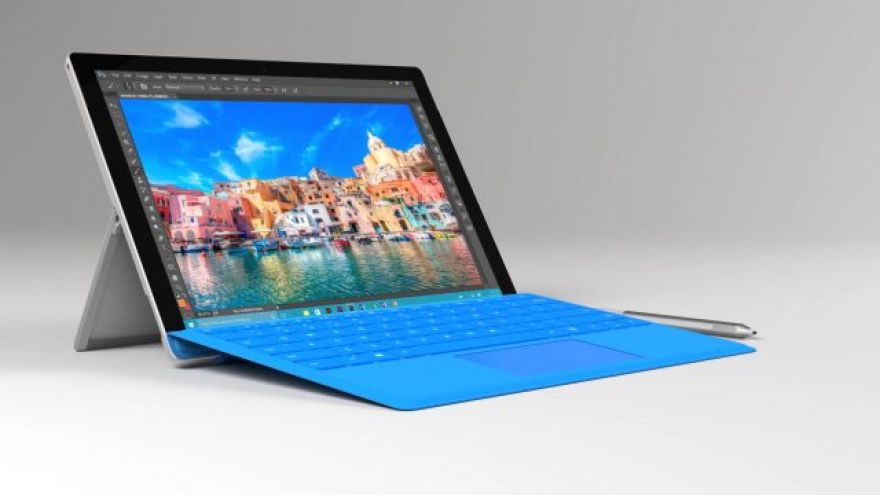
Windows Phone Is Dead and Surface Sales are Slipping
Microsoft announced its quarterly results last night, and the figures were generally good, with revenue of $23.6 billion (up 6%), increased operating income, and higher earnings per share. The one ugly spot was More Personal Computing — the business segment that includes Windows 10, Bing, Surface devices, Windows Phone, and the Xbox business.
Here’s how Microsoft’s CFO, Amy Hood, described the :
[R]evenue was $8.8 billion, declining 7 percent, as Phone and Surface results offset healthy growth in Windows, search, and gaming. Our OEM business grew 5% this quarter. OEM Pro revenue grew 10%, ahead of the commercial PC market, mainly due to a higher mix of premium SKUs…
Devices revenue declined 51 percent. We had no material Phone revenue this quarter. Our Surface business declined 26 percent and 25 percent in constant currency, as heightened price competition and product end-of-lifecycle dynamics resulted in lower than expected Surface Pro unit volumes…
[W]e expect revenue to decline with negligible revenue from Phone. With Surface, we expect a more moderate rate of decline given the prior-year comparable and current market dynamics.
Nothing in those paragraphs is great for Microsoft’s hardware business. The device revenue fall-off presumably includes sales, though these may not have slumped as far as other product categories. Elsewhere in the call, Hood refers to the gaming business growing by 4 percent as Xbox Live growth offset a decline in Xbox One sales. Xbox Live monthly active users also grew by 13 percent measured across Windows 10, Xbox Live, and mobile platforms. Microsoft doesn’t disclose whether its active user count includes users who have Xbox Live and installed on multiple systems as a single user.
PC / Xbox streaming is a major feature MS is pushing these days.
But the potentially seasonal decline in Xbox One sales is dwarfed by falling Surface and Windows 10 Mobile revenue. “We had no material Phone revenue this quarter” is execu-speak for “Windows 10 Mobile is dead.”
Investors don’t seem to care much, given that none of them asked questions about the mobile, gaming, or hardware markets. But this isn’t good news for anyone who actually liked Microsoft’s line-up or wants to use . First, it’s increasingly difficult to see why Microsoft is even bothering with updating the operating system. It has no declared hardware platform and no partners aggressively trying to drive it into the smartphone or tablet market. Enthusiasts like to talk about the much-rumored Surface Phone as if it were a market reality, but Google Trends confirms we’ve been hearing these rumors for a long time.
That initial spike happened the day Ballmer announced the Surface product family. Interest in such a device has bubbled along ever since, but Microsoft has said nothing about any such product. Obviously I’m not omniscient, but it seems exceptionally unlikely that the company will try to revive its failing platform with a custom-built niche product like the mainstream Surface lineup.
As for the Surface revenue declines, Microsoft is showing troubling signs of writing off these businesses as well. When Surface launched, Microsoft made it clear these cutting-edge tablets were designed to showcase the best the PC industry had to offer. Along with ultrabooks, Microsoft wanted to give OEMs an example of what tablets could be and do. In a lot of ways, the company succeeded. I’ve never been happy about some of the persistent issues that have dogged Microsoft’s hardware business, like the way Surface Pro 3 owners with dodgy batteries were bait-and-switched (MS did eventually make good on this issue), but Surface has definitely done a good job of demonstrating a no-compromise experience. Devices like the Surface Book and Surface Studio have even arguably moved the ball forward, even if they remain niche products with extremely high price points.
But looming over those accomplishments is the simple fact that these hardware designs are rather dated. The Surface Pro 4 is 18 months old, and the Surface Book only received a minor GPU bump in its latest iteration. They collectively lack USB-C, Thunderbolt 3, modern Nvidia GPUs, and Intel’s 7th generation Kaby Lake processors. If Microsoft wants us to view Surface as a genuine business, as opposed to a hobby or a one-time project, it needs to spend some time talking about its plans for this segment. And if I’m wrong and some mythical Surface Phone is being forged deep in the skunkworks of Redmond, it’s time to start talking about it. Right now, there are way too many shades of Nokia in this situation for it to feel comfortable.
Now read: